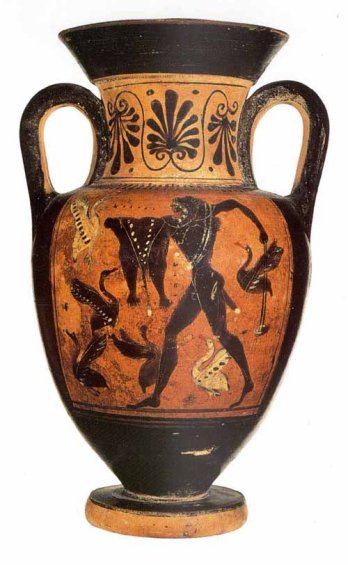Sixth Labour (Stymphalian Birds)
For the sixth labour, Heracles was required to chase away Stymphalian Birds that were ravaging the countryside around the lake called Stymphalus, in north-eastern Arcadia.
The Stymphalian birds were so numerous that Heracles was at a loss on how to drive the birds away. He knew that he would not have enough arrows and javelins to kill all the birds.
Athena again came to his aid, and gave Heracles a rattle that would frighten the birds into flight.
Heracles used the rattle to make a loud noise from a nearby mountain that frightened the birds into flight. Heracles shot down a number of birds before driving the rest away.
They may have been the same birds that infested the barren island, sacred to Ares. The Argonauts encountered these birds, and Oileus was wounded by one of their deadly feathers. Amphidamas of Arcadia remembered how Heracles drove away the Stymphalian Birds, with loud noises.
Related Information
Sources
Library was written by Apollodorus.
Related Articles
By Jimmy Joe







